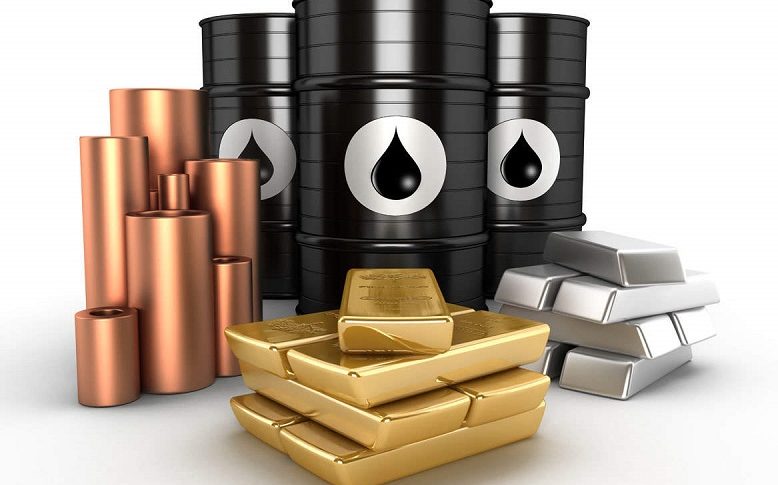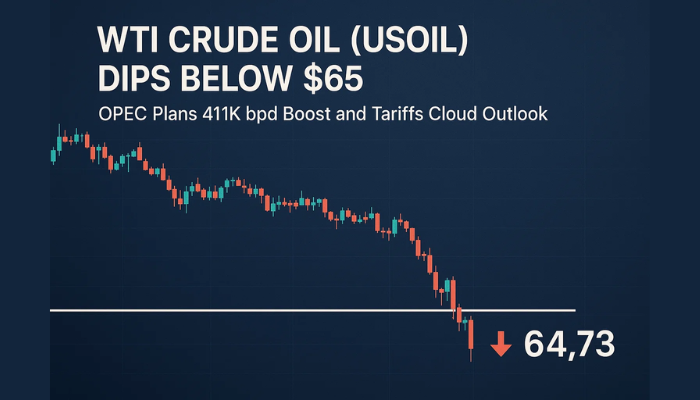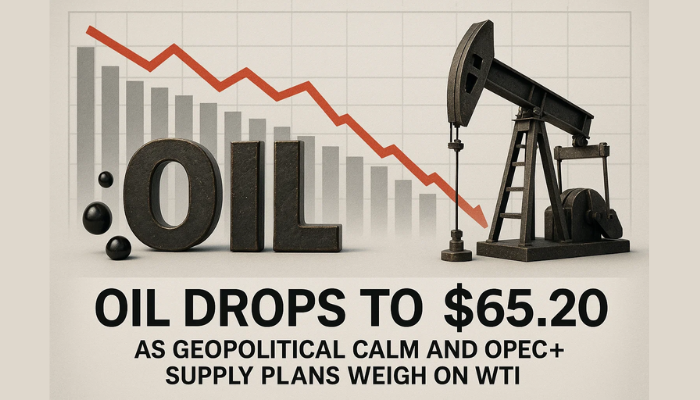US Crude Oil Production Forecast 2022
The United States is the world's third-largest producer of crude oil, behind Saudi Arabia and Russia. Oil production in the United States...

The United States is the world’s third-largest producer of crude oil, behind Saudi Arabia and Russia. Oil production in the United States has gradually declined since its peak in 1970. This decline was due to various factors, including reduced access to oil reserves and increased competition from other countries. However, recent technological advancements have led to a resurgence in American production that is expected to surpass its previous peak by 2020.
The government said in a monthly forecast on Tuesday that crude oil output in the United States will increase by 720,000 barrels per day to 11.91 million bpd in 2022. According to the same monthly report from the Energy Information Administration, US crude output is expected to rise from 940,000 bpd to 12.85 million bpd in 2023. Total petroleum consumption in the United States is expected to grow from 730,000 bpd to 20.51 million bpd in 2022.
What is Crude oil?
Petroleum, or crude oil, is a liquid composed of hydrocarbons, organic molecules, and trace amounts of metal found on Earth. Although hydrocarbons are the most abundant component of crude oil, their proportions can vary from 50% to 97 percent, depending on the type of crude oil and how it is recovered.
Organic molecules such as nitrogen, oxygen, and sulfur account for 6 to 10% of crude oil, while metals such as copper, nickel, vanadium, and iron account for less than 1% of the total composition. We all use crude oil in some way, whether directly or indirectly.
Petrochemicals can be found in laptops and computers, medications, recreational sports equipment, cosmetics, and even tea. Lastly, crude oil is a necessity in our daily lives.
The Formation of Crude Oil
Crude oil is produced by heating and compressing organic molecules over time. Most of the oil we now collect is derived from prehistoric algae and zooplankton that sank to the ocean or lake bottom. This organic material eventually mixed with mud and was heated to high temperatures due to the pressure created by heavy sediment layers. This diagenesis process converts the chemical composition into a waxy molecule known as kerogen and then into a liquid via catagenesis, which requires more heat.
Global Oil Production
Even though almost every country uses oil, not every country produces it. The top five oil-producing countries are Saudi Arabia, Russia, the United States, Iran, and China. It should be noted that “production” refers to crude oil extracted from reserves. The top five oil-consuming countries are the United States, China, Japan, Russia, and Germany.
If consumption continues at its current rate, global reserves will run out by 2039. Scientists and engineers are working hard to find more efficient obtaining and refining of crude oil to avoid a global energy crisis.
Referring Article: Trading Crude Oil – A Beginner’s Guide
US Oil Output Expected Near-record High in 2023
Crude oil prices fluctuate seasonally due to supply and demand. The COVID-19 outbreak, which caused a drop in demand, recently influenced crude prices. Despite economic improvement, global uncertainties continue to influence oil prices. The US Energy Information Administration (EIA) predicts that crude oil production in the United States will average 11.9 million barrels per day in 2020 and 12.8 million barrels per day in 2023, exceeding the previous high of 12.3 million barrels per day in 2019. Even though production has gone up, the EIA’s Short-Term Energy Outlook (STEO) for May 2022 says that Brent crude oil prices will stay above $100 per barrel this year.
EIA Administrator Joe DeCarolis believes our forecasts are still uncertain, but we have consistently predicted that higher crude oil prices will contribute to record-high annual US oil output levels in 2023. But because the world’s oil supplies are low and demand for gasoline, diesel, and other petroleum products are still high, the prices will change right away if more oil is made.
In addition, the EIA released its annual Summer Energy Industry Outlook, predicting that strong US economic growth will increase electricity consumption by 0.4 percent this summer (June–August) compared to summer 2021. According to the EIA, retail sales of electricity to the industrial sector will increase by 2.8 percent, while retail sales to the commercial sector will increase by 1.5 percent.
The EIA predicts that due to cooler temperatures, US consumers will use 2.9 percent less electricity this summer than last. As a result, the average US household will spend about the same amount on electricity this summer like last year due to higher electricity prices. Despite increased crude oil production, prices are expected to rise in the near future.
Five Factors Contributing to Today’s Oil Price Volatility
Previously, oil prices fluctuated seasonally. Instead, they skyrocketed in the spring as oil traders anticipated increased demand for summer vacation driving. After demand peaked in the fall and winter, prices fell. Geopolitical and civil unrest have a significant impact on global supply and prices.
There are a lot of things that affect oil prices right now, but here are the five most important ones.
1-Russia’s Invasion of Ukraine
Since Russia is the world’s third-largest producer of liquid fuels and petroleum, its invasion of Ukraine in late February 2022 had an immediate impact on crude oil futures prices. As a result, crude oil prices rose as the war progressed, reaching around $100 per barrel.
2-The US Oil Supply
Natural disasters and the coronavirus epidemic continue to impact oil demand and supply. For instance, the United States saw a decrease in production following Hurricane Ida in September 2021, which shut down at least nine refineries.
According to the EIA, crude oil production in the United States will average 12.01 million barrels per day in 2022 and 12.95 million barrels per day in 2023, according to the EIA.
3 – OPEC Production Cuts
Oil price increases are also caused by supply constraints imposed by the Organization of Petroleum Exporting Countries (OPEC) and its partner countries. OPEC reduced oil output in 2020 due to lower demand during the epidemic and gradually increased oil output in 2021 and 2022.
In late 2021, supply chain issues hampered global trade. OPEC said in December 2021 that it would keep slowly increasing oil production by 0.4 million barrels per day (mb/d) starting in January 2022.
4-Natural Gas (NG)
Historically, Asia relied on coal to generate electricity, but recent shortages have forced it to switch to natural gas. Because of this, higher temperatures in Asia and Europe have led to a higher demand for natural gas to make electricity.
COVID-19 has impacted Europe’s natural gas output, and a colder-than-expected heating season in early 2021 has further limited supplies. As a result, natural gas prices will skyrocket in 2021 and 2022, forcing affected countries to switch from gas to oil to save money on power generation.
5-Make a Global Inventory
Countries are being forced to draw on their stored reserves as global oil output falls (not including strategic petroleum reserves). Because supplies are running low, the constant demand for oil is driving up prices.
OPEC Cuts Oil Demand Growth Forecast for 2022 by 480,000 Bpd:
OPEC reduced its 2022 oil demand growth forecast by about 500,000 barrels per day (bpd), citing weaker-than-expected global economic growth and the reintroduction of COVID lockdowns in China. According to the cartel’s closely watched Monthly Oil Market Report (MOMR), global oil demand growth this year will be 3.67 million barrels per day (bpd), down from 4.15 million bpd last month. This is because OPEC has reduced its forecast for economic growth.
Total oil consumption is expected to average 100.5 million barrels per day in 2022, down from 100.91 million barrels per day in March. To be sure, OPEC’s forecast for global oil demand growth “remains under review,” as it did in March, until “more clarity emerges.”
OPEC+, the coalition’s primary member, invaded Ukraine at the end of February, prompting OPEC to issue its first report since then. The changes in global economic growth and oil demand growth in the April study, according to the report, were caused by “recent geopolitical tensions in Eastern Europe” and “soaring inflation around the world.”
In a previous assessment, OPEC reduced its forecast for global economic growth in 2022 from 4.2 percent to 3.9 percent. The cartel noted that this included the impact of the Eastern European conflict and the ongoing consequences of the pandemic, with the risks weighing heavily on the downside.
As a result, the estimated growth in oil demand has been reduced by 480,000 bpd to “allow for global GDP losses due to geopolitical developments and the return of the Omicron variation on global oil demand in China.”
According to OPEC estimates, global oil consumption increased by more than 5 million barrels per day in the first quarter of 2022, as most countries eased COVID-related restrictions. However, due to recent political changes in Eastern Europe, the cartel expects growth in Q2 and Q3 2022 to be 3.5 mb/d year on year.
That’s all there is to it for the Crude oil production forecast; stay tuned to FXLeaders for forex trading signals and trade ideas. Have a wonderful day!
- Check out our free forex signals
- Follow the top economic events on FX Leaders economic calendar
- Trade better, discover more Forex Trading Strategies
- Open a FREE Trading Account


